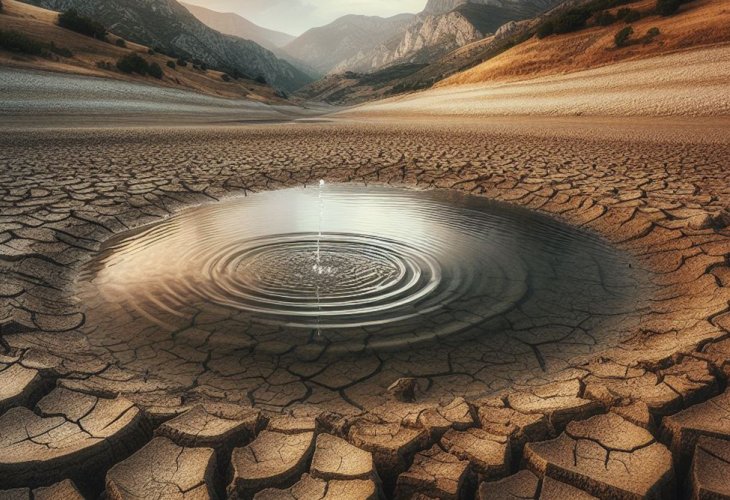When Jews Were Asked to Pray for Rain
Amidst conflicts between Islam and Judaism, particularly affecting Jews in the Land of Israel, there were times when Muslims turned to Jews for prayers.

In times of conflict that Islam declares upon Judaism, especially towards the residents of the Land of Israel, let's remember other periods where Muslims, having lost hope in their own prayers, turned to Jews to intercede for them.
In the 19th century, Jews primarily lived in the four holy cities: Jerusalem, Hebron, Safed, and Tiberias. Life conditions were incredibly tough, as was earning a livelihood, and during years of drought, a new and terrible problem arose: lack of water. This was not just for irrigation, but a shortage of drinking water. Summer would arrive, those in charge would assess the remaining water in cisterns, and only a meager daily amount was allocated per person.
We are used to refreshing ourselves at any moment, washing our faces or hands, drinking a cold bottle of water, or perhaps even a fizzy drink. But two hundred years ago, this wasn't even a dream. On hot summer days, ordinary people could only dream of water. Residents of the holy cities, except for Tiberias of course, used cistern water collected during winter or meager springs meant to suffice the entire city, and during drought years, the situation was dire.
Rabbi Chaim Horwitz, in his book "Chibat Yerushalayim", writes: "Israel in Eretz Yisrael rejoices when rain falls in the right season... but for several years, the residents of the Holy Land have been greatly troubled by a lack of rainfall, until last year, the year 1831, when in all the holy cities they fasted... and prostrated on the graves of the righteous."
Rabbi Yehosef Schwartz writes to his brother: "The lack of rain here is a severe blow, not only because of its impact on crops, but also because rainwater is used for drinking, as we have no source of live water here... Water is brought to Jerusalem underground from a distant spring..." (1837).
In the year 1853, a severe drought struck Eretz Yisrael. Jews of Jerusalem made amendments, decreed a public fast, and examined their deeds, and their efforts bore fruit, as they wrote in their letter: "Praise to Hashem, for we were answered with abundant and generous rainwater filling our cisterns and reservoirs."
Two years later, in 1856, another terrible drought occurred. Muslims encircled the Dome of the Rock and held various prayers, but to no avail. In desperation, the Pasha commanded the Jews to ascend to the Dome of the Rock and pray at the Foundation Stone. However, Jewish sages responded that it was forbidden according to Jewish law and proposed praying at the Tomb of King David instead. The Pasha agreed and demanded immediate prayer. Indeed, the Jewish prayer worked: on the 8th of Tevet 1856 "rain began to fall shortly thereafter and continued for several hours." Naturally, this led to a significant sanctification of Hashem's name.
In 1926, during the British Mandate, another drought impacted the land, and High Commissioner Plumer called upon the chief rabbis of Eretz Yisrael to pray for rain. As reported in the press, the results remain unknown.
Interestingly, in 1907, after prayers, rains were too heavy, reminiscent of the tale of Choni HaMe'agel, and as one Jerusalem resident writes: "It seems we prayed too much for the rain stoppage, for rain fell abundantly and fiercely, and the cold intensified greatly, and we were confined to our homes, almost despising our lives, until we prayed oppositely, and the sun shone."

